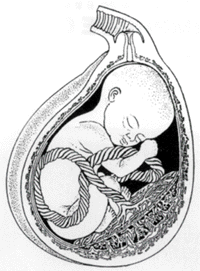Are you a journalist? Please sign up here for our press releases
Subscribe to our monthly newsletter:

Identification of fetuses likely to suffer from future neurodevelopmental problems due to placental malfunction may become possible as early as four to six weeks after conception, thanks to a new technique developed by Weizmann Institute scientists and physicians from the Tel Aviv Medical Center. Based on a simple urine analysis, the new method should markedly facilitate the prevention or mitigation of postnatal complications such as infant death or mental retardation.
Prof. Ephraim Yavin of the Institute's Neurobiology Department and Prof. Shaul Harel of the Tel Aviv Medical Center and Tel Aviv University have studied the link between "ischemic," or blood-deprived fetuses and intrauterine growth retardation (IUGR), which occurs in 3% to 10% of all pregnancies and is responsible for 33% of all low birthweight infants. IUGR -- often recognized at birth by large head circumference relative to body weight --is common among low-income populations, smokers and certain ethnic groups and families. Although up to 30% of IUGR infants "catch up" to normal children within a few years, the disorder is linked to infant and early childhood mortality, cerebral palsy, speech and learning disabilities and small body size.